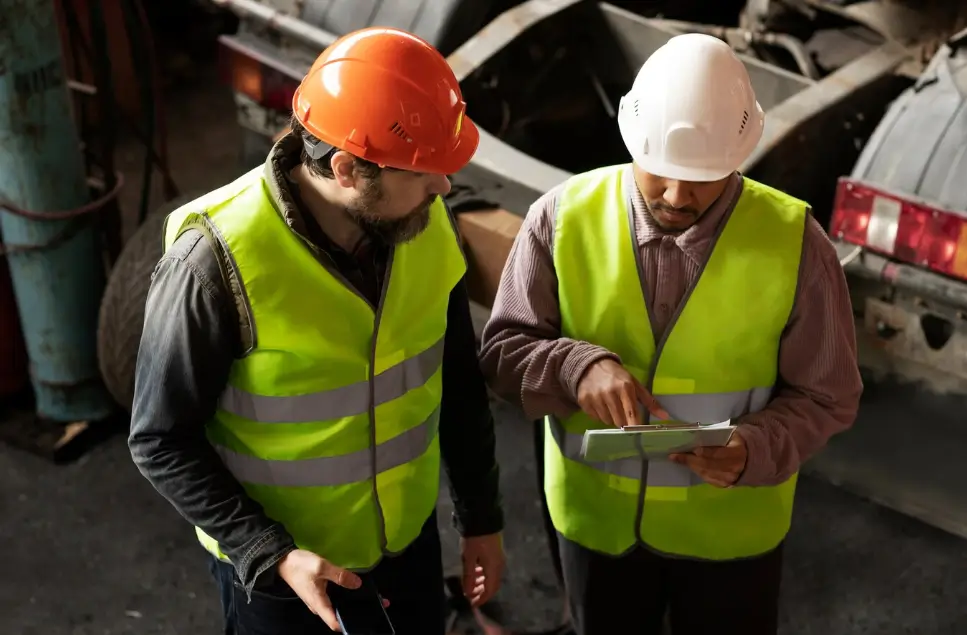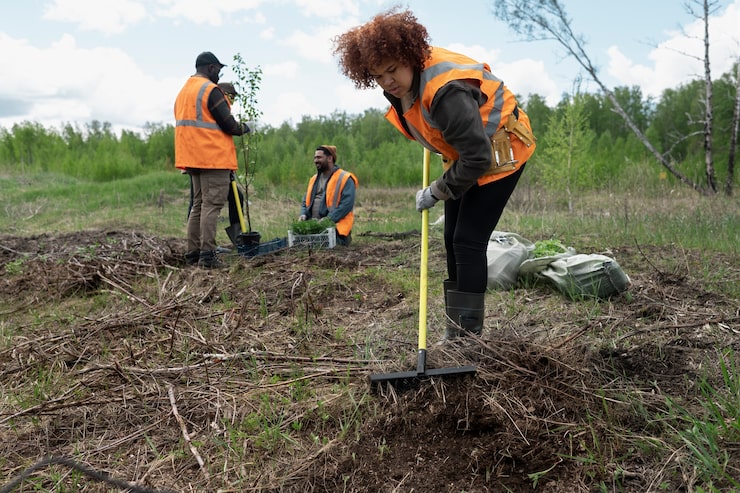The Top Safety Precautions Taken by Professional Demolition Crews

Expert Drainage System Installation | Protect Your Property from Water Damage
April 16, 2025
What to Expect During a Professional Bush Hogging Service
July 21, 2025Professional demolition crews follow strict safety protocols to protect workers, nearby structures, and the public during demolition projects. These precautions involve careful planning, specialized equipment, and trained personnel who understand the risks associated with bringing down buildings and structures.
Pre-Demolition Site Assessment
Before any demolition begins, crews conduct thorough site evaluations to identify hazards and plan safe work procedures. Engineers examine the structure’s construction materials, age, and architectural design to determine the safest demolition method. This assessment includes checking for asbestos, lead paint, and other hazardous materials that require special handling and disposal procedures.
Teams also survey the surrounding area to identify nearby buildings, power lines, gas mains, and water systems that could be affected by the demolition work. Underground utilities receive particular attention, as striking these during demolition can cause serious injuries, service disruptions, and property damage.
Soil conditions around the demolition site are evaluated to ensure heavy equipment can operate safely without causing ground instability. Crews document access routes for emergency vehicles and establish evacuation plans for workers and nearby residents if needed.
Personal Protection Equipment Requirements
All demolition crew members must wear appropriate personal protection equipment (PPE) throughout the project. Hard hats protect against falling debris, while safety glasses shield eyes from dust and flying particles. Steel-toed boots provide foot protection from heavy materials and sharp objects commonly found at demolition sites.
Respiratory protection is mandatory when working with dusty materials or in enclosed spaces. Crew members use N95 masks for basic dust protection and supplied-air respirators when working with asbestos or other hazardous substances. High-visibility clothing helps workers stay visible to equipment operators and other crew members.
Fall protection equipment becomes necessary when working at heights or near excavated areas. Safety harnesses, lanyards, and anchor points prevent workers from falling into dangerous areas during the demolition process.
Structural Stability Monitoring
Professional crews continuously monitor structural stability throughout the demolition process to prevent sudden collapses that could injure workers or damage nearby properties. Engineers use specialized instruments to measure building movement and stress levels in remaining structural elements.
Support systems are installed in buildings undergoing partial demolition to maintain stability in sections that will remain standing. These temporary braces and supports are engineered to handle the loads that will be redistributed as portions of the structure are removed.
Workers maintain safe distances from unstable structures and use remote-controlled equipment when possible to minimize exposure to collapse risks. Clear communication systems allow crews to evacuate quickly if structural conditions become dangerous.
Environmental Protection Measures
Demolition crews implement dust control measures to protect air quality in the surrounding area. Water spraying systems suppress dust during demolition activities, while barriers and enclosures contain debris and prevent it from spreading to neighboring properties.
Noise control measures include using quieter demolition methods during residential work hours and installing sound barriers around the work site. These precautions help maintain good relationships with the community while protecting workers’ hearing.
Hazardous material handling follows strict environmental regulations. Asbestos removal requires specialized crews with proper training and equipment. Lead paint is carefully contained and disposed of according to EPA guidelines. These materials are removed before general demolition begins to prevent contamination of other debris.
Equipment Safety Protocols
Heavy machinery operators receive specialized training for demolition work, which requires different skills than standard construction equipment operation. Operators must understand how buildings behave during demolition and recognize signs of instability that could endanger the equipment and crew.
Regular equipment inspections ensure all machinery functions properly before each work day. Hydraulic systems, tracks, and attachments receive particular attention since equipment failure during demolition can create serious safety hazards.
Crane operations follow strict protocols when working near power lines or in confined spaces. Spotters assist operators with visibility and communication, while load calculations ensure the equipment is not overloaded during debris removal.
Emergency Response Planning
Professional demolition crews develop detailed emergency response plans before beginning work. These plans include procedures for medical emergencies, equipment failures, structural collapses, and environmental incidents like chemical spills or fires.
First aid stations are established at all demolition sites with trained personnel available to provide immediate medical attention. Emergency contact numbers for local hospitals, fire departments, and poison control centers are readily available to all crew members.
Communication systems allow workers to call for help quickly and coordinate emergency responses. Radio systems are tested daily to ensure they function properly in the dusty, noisy environment of demolition sites.
Coordination with Local Authorities
Professional crews coordinate closely with local building departments, fire marshals, and utility companies throughout the demolition process. Building permits specify safety requirements and inspection schedules that must be followed to maintain legal compliance.
Utility companies are notified well in advance of demolition activities to ensure safe disconnection of services and protection of remaining infrastructure. Police departments may be involved in traffic control and crowd management for large demolition projects in urban areas.
Fire departments are often notified of demolition schedules so they can respond quickly if fires or other emergencies occur. Some jurisdictions require fire department personnel to be present during certain types of demolition work.
Professional demolition crews understand that safety precautions are not optional features but essential requirements for successful project completion. These protocols protect workers, preserve surrounding property, and maintain public safety throughout the demolition process.



